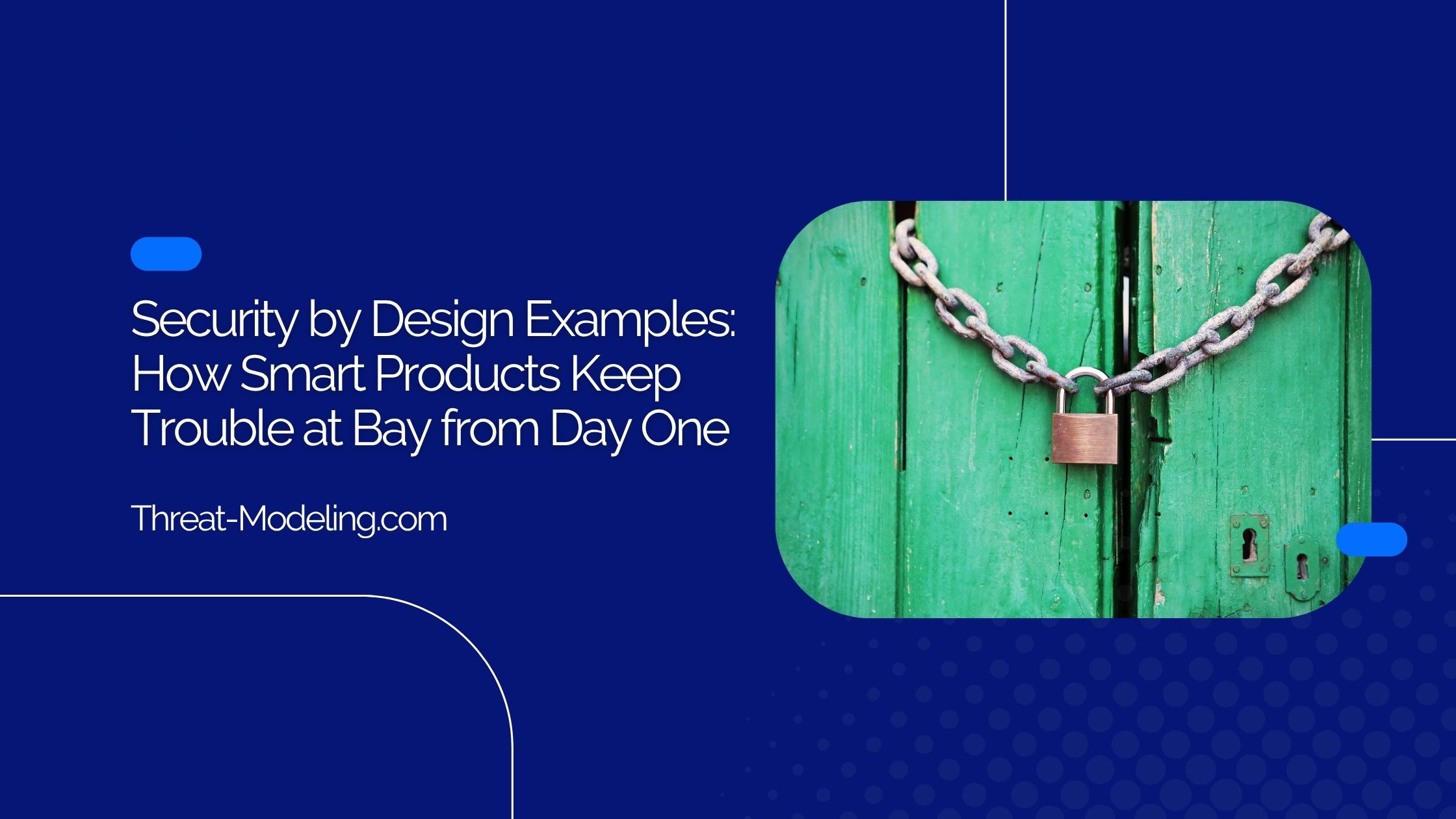Security by Design sits at the heart of every modern conversation about trustworthy technology. Whether you are a CTO mapping out a cloud migration or a parent setting up a smart thermostat, the same question echoes in the background: “Was safety baked in, or sprinkled on at the last minute?” In a world where software runs our homes, cars, and personal data, it is no longer enough to bolt locks onto finished products. True security starts much earlier, during whiteboard sessions, code sprints, and architecture diagrams. Today, we will explore real-life security by design examples, some inspiring, some cautionary, that reveal what it means to embed resilience at the blueprint stage. Along the way, you will pick up insights you can apply to your projects, regardless of size or industry.
The Shift from Patchwork to Built-In Protection
Cast your mind back twenty years. If an application shipped with a glaring vulnerability, no one blinked. A vendor might issue a patch weeks or months later, and users would dutifully download it on dial-up connections. Those days feel quaint now. The stakes have skyrocketed, and the attack surface has exploded. Cloud-native microservices, mobile apps, and Internet-of-Things devices expand the playground for hackers. The remedy has been a mindset pivot: treat security as a core design requirement, not an afterthought. The phrase “secure by design” sounded like a buzzword at first, but tangible success stories piled up, creating a playbook every product team should study.
A Tale of Two Medical Devices
Imagine two rival firms racing to release smart insulin pumps. Company A believed rapid market entry would beat any competitor. Designers focused on battery life, display readability, and cost. Security checks? They considered them “phase two.” Company B, on the other hand, summoned threat modelers during the prototype phase. Engineers asked what would happen if an attacker intercepted wireless signals or tampered with dosage calculations. They built encrypted communication channels, constant integrity checks, and a failsafe mode that shut delivery off if anomalies appeared.
Months after launch, Company A was forced to recall thousands of pumps when researchers demonstrated remote takeover. The recall battered its brand and stock price. Company B’s product, meanwhile, passed FDA scrutiny with flying colors and quickly won trust from hospitals. This scenario is one of the clearest Security by Design Examples in healthcare, showing how early investments pay dividends later in credibility, compliance, and patient safety.
Cloud-Native Triumphs: From Terraform Scripts to Production
Turning to the cloud, consider a fintech startup spinning up infrastructure on AWS. It would have been tempting to click through the console, use default settings, and get an MVP running in days. Instead, the team codified every resource in Terraform, a declarative language that treats infrastructure like source code. Right from the first line, they embedded strict network segmentation, least-privilege IAM roles, and automated secret rotation. Whenever someone ran terraform apply, the system validated these guardrails.
Fast forward a year: auditors swooped in, ready to scrutinize. Thanks to immutable logs and version-controlled blueprints, the startup sailed through certification. Contrast this with peers that began with ad-hoc experiments and later scrambled to retrofit firewalls and encryption. The difference? The startup made security non-negotiable, codified from day one. This is among the more instructive Security by Design Examples for DevOps practitioners who crave speed without sacrificing trust.
Automotive Lessons: The Secure ECU
Modern cars are rolling computers. An average vehicle contains dozens of Electronic Control Units (ECUs) chatting over a CAN bus. When manufacturers first squeezed Wi-Fi and Bluetooth into dashboards for in-car entertainment, they accidentally unlocked remote access pathways to critical driving functions. The famous Jeep Cherokee hack of 2015 woke up the entire industry. Since then, forward-thinking automakers have re-architected their ECUs with hardware-rooted keys, siloed subnets, and secure boot processes. One car maker went a step further: every firmware update carries a cryptographic signature that the ECU validates before installation. If the signature fails, the system refuses the update.
By integrating cryptography into chips and firmware workflows, the manufacturer shrank the attack surface dramatically. Drivers never notice the background checks, but they gain peace of mind knowing that malicious code cannot hijack steering or brakes. As more self-driving features roll out, such Security by Design Examples in automotive engineering will only grow in relevance.
User-Centered Design Meets Security
Engineers can build the strongest locks in the world, yet users might leave the door ajar if they find those locks cumbersome. A messaging app developer discovered this during beta testing. Early prototypes forced people to manage long encryption keys manually. Testers grumbled, got confused, and sometimes copied keys into unencrypted notes. The team quickly pivoted. They replaced manual key exchanges with QR codes and subtle, gamified onboarding that guided users through verification in under a minute.
The result? End-to-end encryption remained intact, but friction disappeared. Adoption soared, and support tickets plummeted. The takeaway is clear: security and usability are not sworn enemies. They need joint consideration from the first wireframe. When you examine Security by Design Examples that succeed, you almost always see empathy for end users woven into the core threat model.
Securing the Supply Chain: From Open-Source to Production
Most modern applications lean on open-source libraries. While this speeds development, it introduces third-party risk. A large e-commerce platform realized this when the infamous Log4Shell vulnerability rocked the world. In response, the company overhauled its build pipeline. Developers could no longer pull random dependencies from the internet. Instead, all libraries flowed through an internal mirror scanned by multiple static and dynamic analyzers. Every artifact gained a provenance record, including the compiler version, build arguments, and hash values.
Now, if a zero-day surfaces, security teams can query the software bill of materials (SBOM) and locate every affected microservice within minutes. Downtime shrinks, patches land faster, and customers continue shopping unaware of the drama backstage. Supply-chain hardening, once esoteric, is becoming a staple among Security by Design Examples that help businesses weather the perpetual storm of vulnerabilities in shared code.
Privacy by Architecture: Minimizing Data, Maximizing Trust
Security and privacy intertwine, but they are not identical. A smart-home camera company learned this the hard way after critics blasted it for storing video in plain text on global servers. In response, the firm rebuilt its data pipeline. Footage now streams through an encrypted tunnel straight to the user’s phone, bypassing central storage entirely. Cloud servers only hold metadata, such as device status and health metrics, none of which can reveal personal scenes.
This revamp cut storage costs while boosting public trust. Regulators took notice and praised the proactive stance. Customers, once hesitant, flooded the company with positive reviews for “caring about privacy.” This story underscores that reducing data exposure is not just ethically sound; it is brand-enhancing. Security by Design Examples like this illuminate how architecture choices can both shield users and elevate market perception.
The Role of Continuous Testing and Chaos Engineering
Even the finest blueprints cannot anticipate every twist in a dynamic environment. Forward-leaning teams add continuous validation layers to keep threats at bay. One global bank embraced chaos engineering for security. They deployed automated “gremlin” tools that randomly revoked permissions, rotated keys, and simulated ransomware encryption on isolated replicas. If monitoring failed to catch the chaos event, alerts were fired. Developers then patched blind spots in observability until the system detected every sabotage attempt within seconds.
This relentless stress testing toughened their defenses. When an actual insider accidentally triggered a dangerous script in production, alarms blared immediately. Damage stayed minimal, and the incident became a learning exercise instead of a headline. Continuous adversarial testing belongs on the roster of pragmatic Security by Design Examples, showing how resilience matures over time, not just during a single design sprint.
Regulatory Sparks: How Laws Inspire Better Architecture
Laws like Europe’s General Data Protection Regulation (GDPR) and California’s Consumer Privacy Act (CCPA) mandate “privacy by design,” which overlaps heavily with security. One SaaS vendor saw regulation not as a burden, but as a blueprint for improvement. They created data retention modules that delete dormant customer records automatically after a configurable period. Audit trails document each erasure event for compliance. This architectural pattern prevented database bloat, reduced risk, and simplified legal responses. Clients enjoyed faster load times because stale data no longer clogged query paths.
By aligning product roadmaps with legal frameworks from the outset, the vendor avoided retrofitting headaches. More importantly, they demonstrated accountability, which proved vital in winning enterprise contracts. The moral here is clear: external pressure can motivate internal excellence. Among Security by Design Examples driven by compliance, this case stands out for turning a regulatory hurdle into a competitive advantage.
The Economics of Building It Right the First Time
Critics sometimes argue that proactive security slows innovation and inflates budgets. Yet empirical studies show the opposite. The Ponemon Institute regularly tracks breach costs, which often soar into millions per incident. Compare that with incremental spending on secure coding training, penetration testing, and security tooling, it almost always costs less. A logistics platform quantified this by tracking engineering hours. They measured refactoring time when vulnerabilities surfaced versus the up-front time needed to follow hardened templates. Over a year, teams that embraced security guidelines saved 30 percent in total effort, thanks to fewer firefights and cleaner code reviews.
This financial angle resonates with executives who speak the language of return on investment. It also empowers engineers to pitch secure architecture with hard numbers, not abstract fear. Such fiscal evidence strengthens the catalogue of Security by Design Examples, demonstrating that cautious planning is fiscally prudent, not extravagant.
Practical Tips for Your Next Project
So, how do you embed these lessons into your own workflow? Start small but start early. Map out threat models as soon as you draw system diagrams. Automate guardrails in infrastructure code. Treat user experience design and security team reviews as a joint exercise, not sequential tasks. Keep an eye on supply-chain hygiene, and do not underestimate the power of chaos testing in sandboxes. If regulations loom, translate those clauses into technical requirements instead of legal footnotes. Over time, security becomes muscle memory, woven into sprint rituals and company culture.
Looking Ahead: AI, Quantum, and the Next Frontier
Emerging technologies introduce new wrinkles. Machine learning models can leak training data or be tricked by adversarial inputs. Quantum computing threatens current encryption schemes. The silver lining is that the Security by Design philosophy adapts as fast as technology evolves. For AI, principled data handling and explainability checks belong in model pipelines. For quantum risks, forward-thinking teams already test post-quantum algorithms in parallel environments. Tomorrow’s Security by Design Examples will likely involve these frontiers, proving once again that proactive architectures, not reactive patches, shape the path to resilient innovation.
Conclusion: Turning Aspirations into Daily Habits
We have traveled from insulin pumps and cloud Terraform files to connected cars and privacy-first cameras, examining Security by Design Examples that translate abstract principles into real-world wins. Each story underscores a simple truth: security flourishes when it is a habit, not heroics. It thrives in cross-functional dialogue, threat modeling, continuous testing, and empathetic user journeys. Most of all, it begins on day zero, when ideas first materialize on a whiteboard. As you embark on your next product, remember these examples. They are proof that smarter beginnings lead to safer endings, for businesses and users alike.


